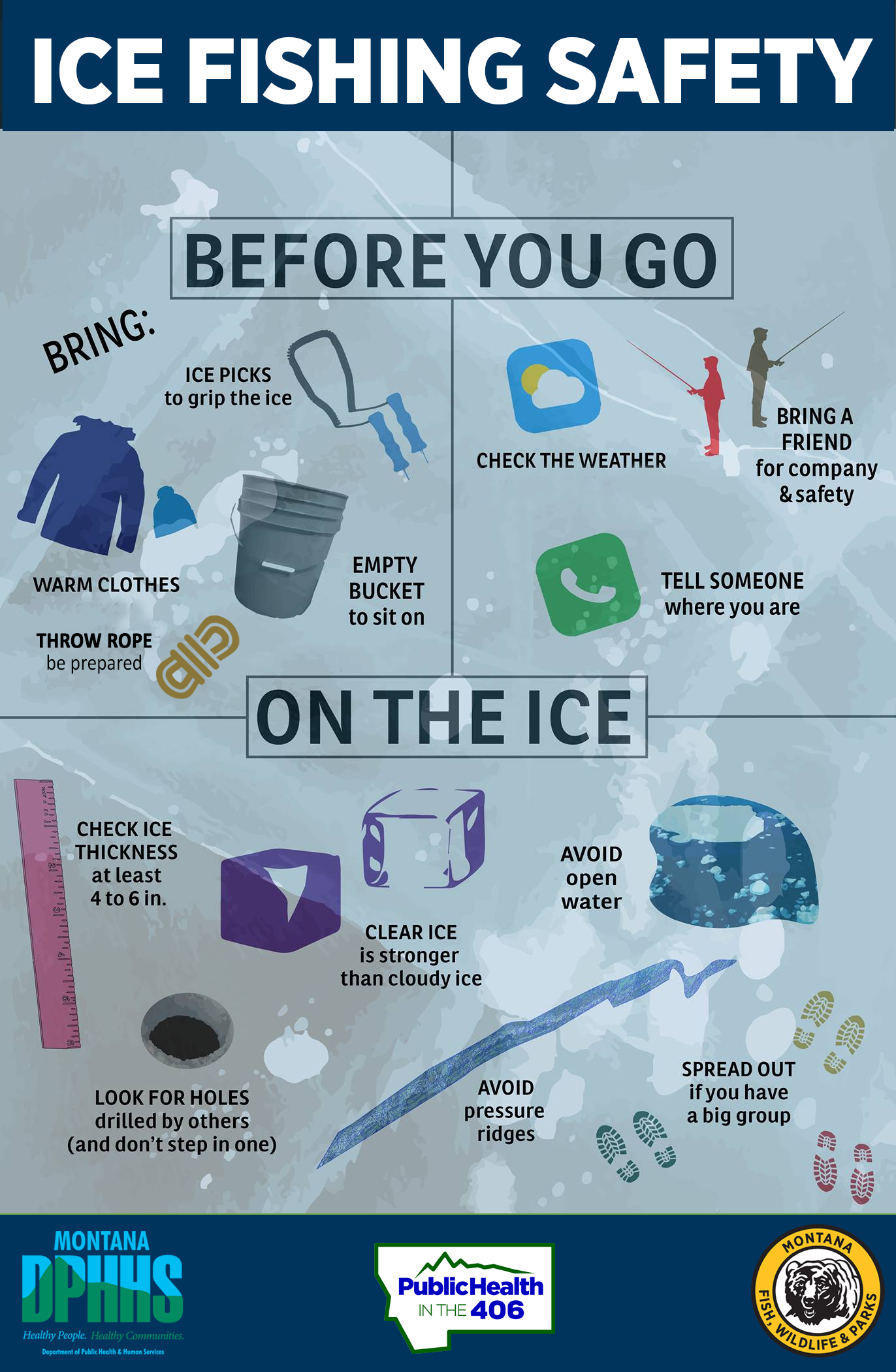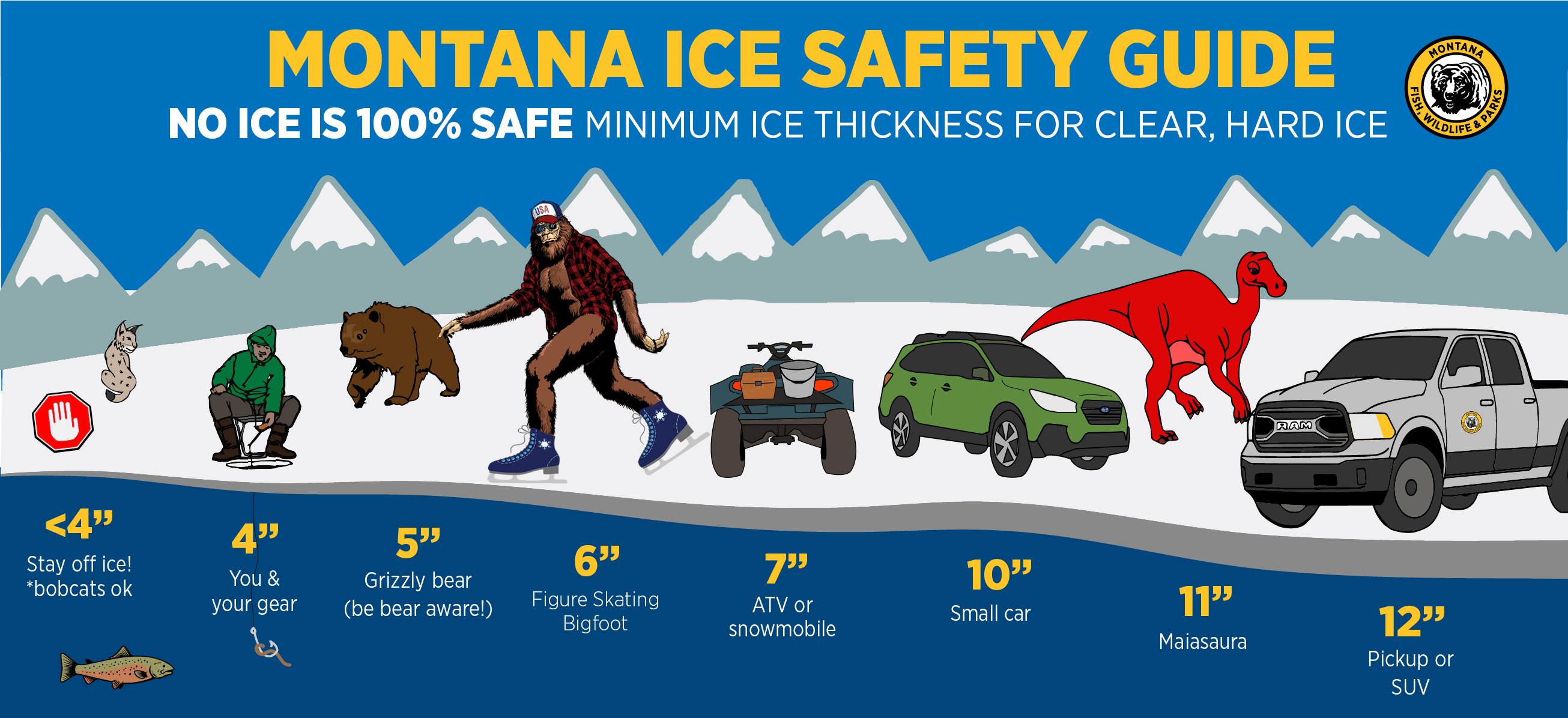Ice Fishing Safety
Never assume ice is safe
A Montana winter doesn't always mean the ice is safe. Sara Smith, our Becoming an Outdoors-woman coordinator, gives some tips to help you make sure you're safe on the ice.

 Is ice ever totally safe? Short answer is no.
Is ice ever totally safe? Short answer is no.Ice fishing is fun, but safety always comes first. Ice conditions can change quickly over time and vary dramatically across short distances.
What about river ice? Safer or more dangerous than lake ice? Never walk out on river ice!
Here are some tips:
Check the weather
Tell someone where you're going.
Bring a friend - for company and safety.
Look for signs that others have been out on the ice first. Never be first on the ice!
Check ice thickness and clarity
There should be at least 4-6 inches of clear ice
If there's snow on the ice, use caution. It can hide the ice condition.
Don't approach open water.
Stay clear of pressure ridges and/or large cracks.
Be extra cautious around areas that can make ice weaker such as docks and other structures. inlets and outlets, and springs.
Spread out if you have a big group.
You can't determine how thick the ice is by looking. Drill a test hole and measure it to make sure it's safe.

A Montana winter doesn't always mean the ice is safe. Sara Smith, our Becoming an Outdoors-woman coordinator, gives some tips to help you make sure you're safe on the ice.
After a day of ice skating on the water, Montana Outdoor Editor Tom Dickson never thought he'd be in the water, but in a split second, he found himself in a dangerous situation. Tom outlines what he did once he was in the water, which saved his life and what he looks for when he is on a frozen body of water, and the tools he brings with him.
How do you ice fish safely using an ATV? Ashton Clinger, FWP Creel Tech, shares a few things to remember before you head out.
